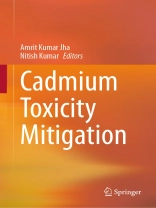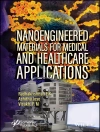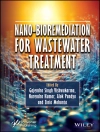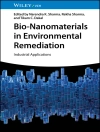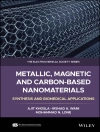This book covers cadmium contamination of soil and plants, its sources, acute and long-term impacts on the environment and human health, and overall challenges posed by the global poisoning issue. Cadmium is among the elements that have been most broadly used by man over time, which has led to extensive pollution of surface soils, mainly associated with the mining and smelting of the metal and the addition of organic cadmium compounds to petrol. The release of cadmium into the atmosphere from various high-temperature processes has also led to surface contamination on a regional and even global scale. Cadmium is particularly firmly bound to humic matter in organic-rich soil and to iron oxides in mineral soil and is rather immobile in the soil unless present at very high concentrations. Plants grown on cadmium-rich soils incorporate cadmium, thus increasing the concentration of cadmium in crop plants. Cadmium thus enters the food chain through the consumption of plant material, whichposes important health risks to humans and animals. In this book, readers will find out about the latest mitigation strategies, including a multi-disciplinary approach to address cadmium contamination. Recent methods in cadmium detoxification, speciation, and molecular mechanisms are included, and the book offers the knowledge required for efficient risk assessment, prevention, and countermeasure.
Divided into 3 parts, this book brings together expert contributions on cadmium toxicity. In the first part, readers will find out about the different sources and distribution of cadmium in soil and plant ecosystems. The second part of the book outlines the health risks linked to cadmium toxicity, and in the final part, readers will discover sustainable cadmium toxicity mitigation strategies and potential applications of recent biological technology in providing solutions. This book is a valuable resource for students, academics, researchers, and environmental professionalsdoing fieldwork on cadmium contamination throughout the world.
Содержание
Part 1: Cadmium in the Environment.- The cadmium in soil and plants.- Speciation, mobilization and toxicity of cadmium in soil-microbe-plant system: An overview.- Part 2: Cadmium Toxicity and Health.- Human Health Effects of chronic Cadmium Exposure.- Cadmium-Induced Neurotoxicity.- Part 3: Sustainable Nexus Solution of Cadmium Toxicity.-Biological interventions in bioremediation of cadmium poisoning.- Microbial tolerance strategies against cadmium toxicity.- Cadmium toxicity and role of Plant Growth Promoting Bacteria in Phytoremediation .- Antioxidant defence: A key mechanism of cadmium tolerance.- Phytoremediation: A promising approach for Re-vegetation of cadmium polluted land.- Cadmium toxicity in plants and its amelioration.- Priming, Cd tolerance and phytoremediation.- Unraveling the adsorption process of Cd2+ on bio-adsorbents: Experimental and theoretical points of view.- Phytoremediation of cadmium contaminated soil.- Molecular Mechanismof Tolerance of Cadmium Toxicity in Plants.- Oxidative Stress in Cadmium Toxicity in Animals and Its Amelioration.
Об авторе
Dr. Amrit Kumar Jha is Scientist (Soil Science) and Head at Krishi Vigyan Kendra, Sahibganj, Birsa Agricultural University, Ranchi, Jharkhand, India. Dr. Jha completed his doctoral research in subject Soil science and Agricultural Chemistry from Birsa Agricultural University, Ranchi, Jharkhand, India. He has more than 18 years of research experience in the field of soil chemistry, soil fertility, and soil pollution. He has published more than 40 research articles in cadmiuming international and national journals, more than 11 technical bulletins and 2 books. He has received many awards such as Young Scientist Award conferred by Society of Krishi Vigyan in 2018, Best KVK Scientist Award conferred by Indian Society of Extension Education in 2018 and Best KVK Scientist Award conferred by Society of Krishi Vigyan in 2020.
Dr. Nitish Kumar is Senior Assistant Professor at the Department of Biotechnology, Central University of South Bihar, Gaya, Bihar, India. Dr. Kumar completed his doctoral research at the Council of Scientific & Industrial Research–Central Salt & Marine Chemicals Research Institute, Bhavnagar, Gujarat, India. He has published more than 70 research articles in cadmiuming international and national journals, more than 20 book chapters and 10 books with Springer and Taylor & Francis. He has a wide area of research experience in the field of Agriculture & Crop improvement, and Microbial & Environmental Biotechnology. Dr. Kumar is a recipient of the Young Scientist Award from the Science and Engineering Research Board (SERB) in 2014 He has received many awards/fellowships/projects from various prestigious government organizations like CSIR, DBT, ICAR and SERB-DST, BRNS-BARC, among others. He is a reviewer for various International Journals and serves as an associate editor of the journal Gene (Elsevier).
